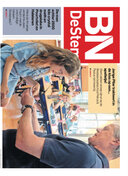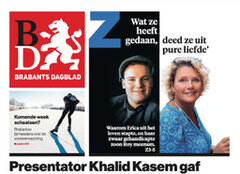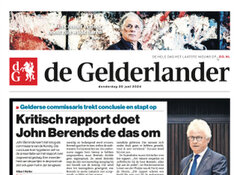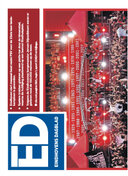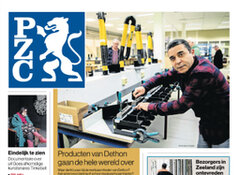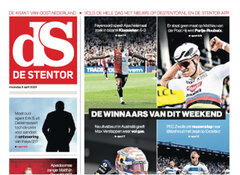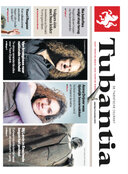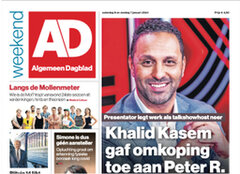Secret recordings of Peter R. de Vries
Once you know something, it’s impossible to ‘un-know’ it as a news medium
The year 2024 got off to a turbulent start. At the end of 2023, newspaper AD obtained secret recordings of Peter R. de Vries. The crime reporter was killed in an attack in July 2021. He was shot in cold blood in the centre of Amsterdam as he walked from the RTL Boulevard studio to his car.
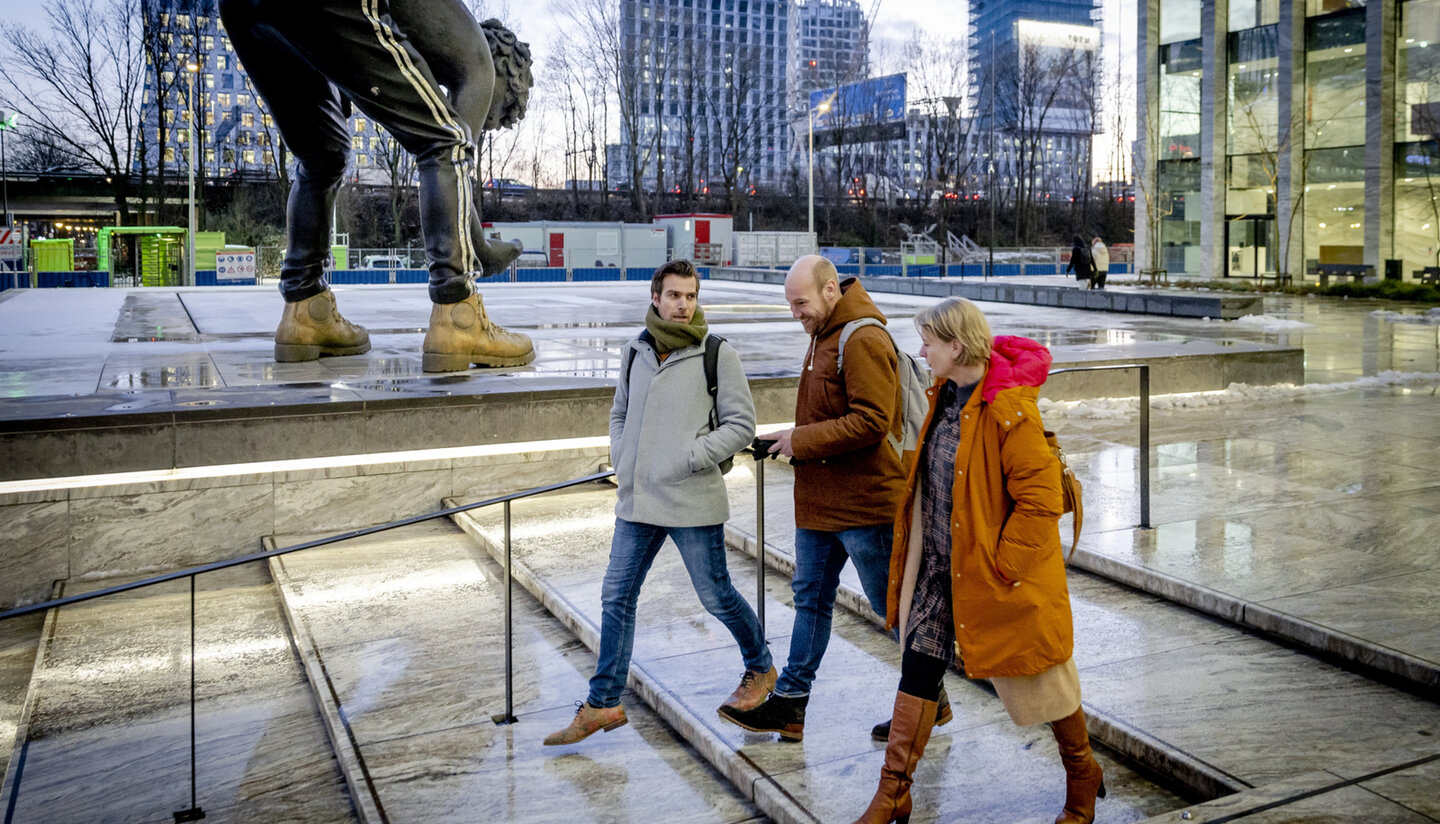
Reporters Chiel Timmermans (l) and Yelle Tieleman (m) leave the court after the summary proceedings together with editor-in-chief Rennie Rijpma
I
n addition to his work as a crime journalist, Peter R. de Vries also served as an advocate for key witness Nabil B. in the Marengo trial, which involved seventeen suspects facing charges of multiple murders and attempted murders. Ridouan Taghi is on trial for allegedly instigating these murders.
The recordings in our possession are from an earlier period. At that time, Peter R. de Vries was the director of the law firm where his son, lawyer Royce de Vries, and Khalid Kasem – who was a lawyer but became a TV host in 2024 – also worked. In the recordings, our reporters captured a conversation between the three, during which Peter R. de Vries confronts his colleague, Khalid Kasem, about potential criminal offences.
When we listen to the recordings for the first time, we are moved by hearing the distinctive voice of Peter R. de Vries again, but it’s the content of the conversation that makes us realise we need to take action. De Vries claims that Kasem either bribed a civil servant or defrauded a client. Kasem denies the latter, which leaves the former, as he himself acknowledges in the exchange.
Respect for the truth and for the public’s right to know the truth is the first rule of the Code of Bordeaux, the ethical code that journalists worldwide follow. Once you know something, it’s impossible to ‘un-know’ it.
Consequences
Now that we know what Peter R. de Vries told his colleague – that Kasem has confessed and expressed remorse – we can no longer ‘un-know’ this. The public has a right to be informed of the truth. We recognise that our publication could have significant consequences for Kasem. He left the legal profession behind to become a prominent TV host, which makes this news all the more relevant.
This pressure and attempts to influence reporting are a growing challenge to press freedom
Politicians, executives, and Dutch celebrities sit down with talk show host Kasem, who challenges them with tough questions. Kasem is influential, which means he has to have an impeccable reputation.
The publication leads to Kasem stepping down as the host of Khalid&Sophie, yet it is a follow-up production that unintentionally attracts the most attention. Even before we publish that second story, Royce de Vries files for summary proceedings. While the story isn’t about him, he believes he could be at risk if his father’s recordings serve as the basis for another journalistic piece.
Judge's ruling
It is a fundamental and important right to be able to approach the court, but the judge’s peculiar ruling leads the entire country to believe that AD is uncovering something deeply precarious. Not only is AD not allowed to publish anything based on the recordings we have, we are also not allowed to say anything about it and no other DPG Media title is allowed to mention the existence of the recordings. A sky-high penalty will be imposed for violation of the ruling.
The public’s right to the truth is a great good, but not at all costs: we do not want our stories to endanger people. Yet this impression is now being created by the summary court judge and by the Bar Association, which is more focused on protecting the confidentiality of lawyers than on investigating whether a lawyer has compromised the integrity of the profession.
This pressure and attempts to influence reporting are a growing challenge to press freedom
Fortunately, in the Netherlands, we also have the right to appeal. The court of appeal in Amsterdam has now ruled in our favour. We are permitted to publish the follow-up story, which, in reality, is far less sensational than the entire country now believes. It does, however, reflect the truth of Kasem’s legal work and his contacts. The truth to which the public is entitled.
Rennie Rijpma
Editor-in-chief of AD

Trusted AD faces give the news more profile
From the top: Yelle Tieleman and Angela de Jong.
From the top: Chiel Timmermans,
Sjoerd Mossou and Elodie Verweij.
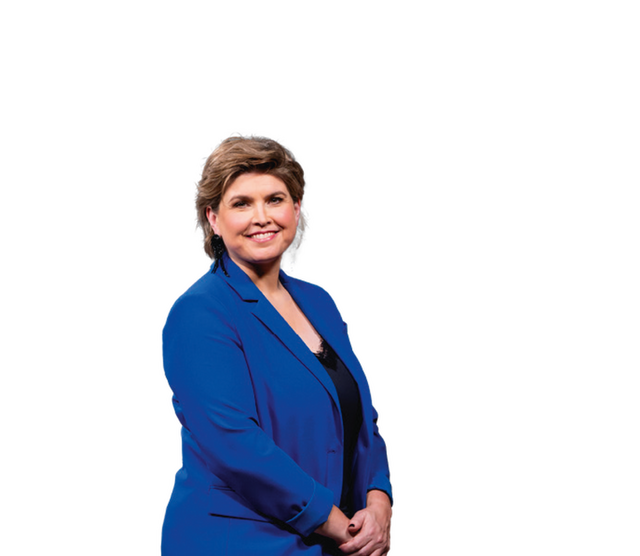
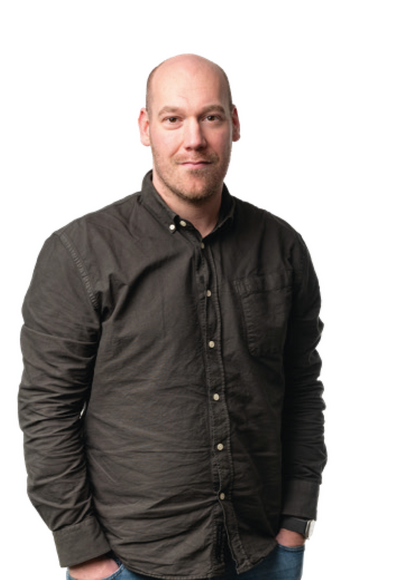
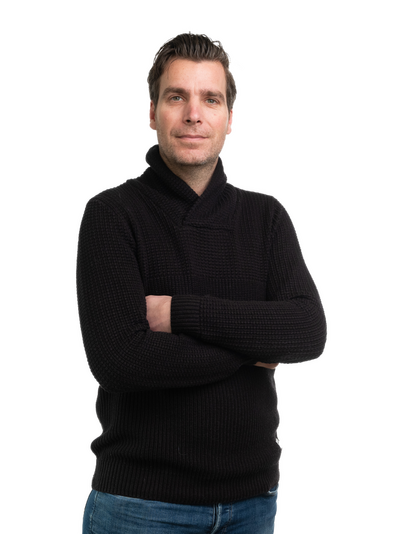
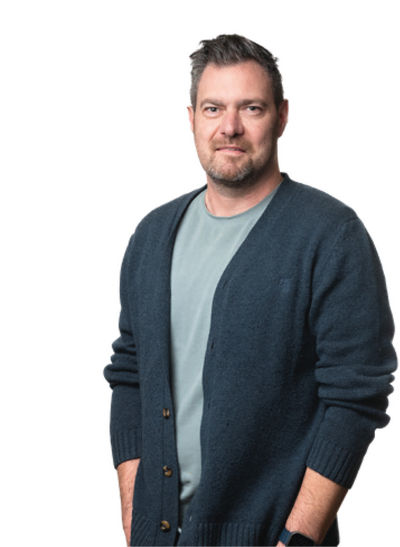
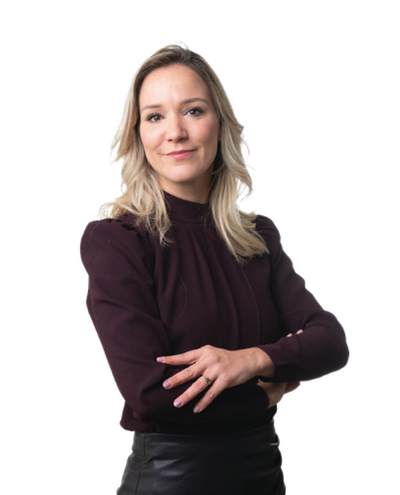
At a time when news often travels anonymously over the internet, the faces of columnists and reporters like Angela, Elodie, Yelle, Chiel and Sjoerd give AD newspaper a human and reliable voice.
If you know Angela de Jong, then you know AD. She watches all television programmes and specifies flawlessly why something moves her, annoys her, makes her happy or when she feels that the viewer is not taken seriously. The latter is unacceptable, in the eyes of Angela, who knows better than anyone else what matters to AD readers.
Her daily column is a constant anchor point for her large fan
base and for all of Hilversum. She is equally astute in her appearances on television. Not just Angela, but also Elodie, Yelle, Chiel and Sjoerd literally give AD a profile. They are the trusted faces of our news. This is important in a time when news more often travels anonymously over the internet. The distinction between reliable news sources, influencers or other sources designed to trigger a reaction is increasingly difficult to make.
Politically, it was an interesting year. A Cabinet of four parties with little governing experience was moulded; new ministers, a prime minister with no party affiliation and all four Cabinet formation party leaders in the Lower House. All this just as we welcomed Elodie Verweij as a political reporter. She is considered the most approachable political commentator at talk show tables, where she is a frequent guest when she is not roaming the corridors of the Lower House or catching up on the latest political scoops together with her colleagues on the editorial team in The Hague.
Yelle Tieleman and Chiel Timmermans are our crime duo. Polished professionals who write about things that cannot bear the light of day. They bring their expertise to radio, television, and podcasts, offering compelling narratives without romanticizing crime.
Sjoerd Mossou is our football romantic. He could lose himself completely in the beauty of the game, his eye for detail, his sense of history. Yet this never happens because, above all, he has an understanding of the game.
Our faces stand for the reliability and authenticity of AD, they stand for our work and for the work of all their colleagues at AD.
Walking while listening to the news
For those short on time: you can also listen to AD

No time to read? As of this year, AD is
also available in audio form. The so-called Text-to-speech (TTS) transforms the written content of articles into audio files.
You can catch up on news while in the car or out for a walk by listening to AD. We want to make AD accessible in as many ways as possible, so that there is always a format that fits your lifestyle. We’re still trying to train our AD voice. Every now and then, you may come across some broken English, but fortunately, our voice is eager to learn. By reading, watching, or listening to AD in the way that suits you best, you help us make it even more valuable for our readers, viewers, and listeners.
“AD Regio? But I thought it was a national medium?”
Together with AD Regio, AD is a unique news brand in the Netherlands. Thanks to stories from 17 regional editions and digital platforms, AD does not only report on national news, but also on personal stories or regional developments. This means that AD is always by your side.
The new mayor of Rotterdam? AD Rotterdams Dagblad was the first to name Ahmed Aboutaleb’s successor – Carola Schouten – and was able to give an extensive reconstruction of the confidential application process a day later.
The ‘Banga lists’ at the Utrecht Student Association? AD Utrechts Nieuwsblad spoke to many students involved. The corruption case involving executive councillor Richard de Mos in The Hague? AD Haagsche Courant produced a podcast series (‘O o De Mos’) with the key players, with an actual episode on the day of the judgment. The PFAS scandal at Chemours in Dordrecht? The attacks on the Vlaardingen plumber or the Alphen liquor store? And of course, personal, constructive, and inspiring stories about the people of the Randstad region. These are just some examples of the regional coverage that AD’s editorial teams provide. They are the heart of AD Regio.
The regional editorial teams of AD are on the ground. They are the heart of ‘AD Regio’.
- “AD Regio?”
Yes.
- “But I thought it was a national news brand?”
Yes, that too.
Through the acquisition of Wegener, DPG Media obtained an extensive portfolio in regional journalism in the Netherlands. That prompted the company to also split AD in 2015, to strengthen both its national and regional positions.
The seven regional brands (AD Rotterdams Dagblad, AD Haagsche Courant, AD Utrechts Nieuwsblad, AD Groene Hart, AD De Dordtenaar, AD Amersfoortse Courant and AD Rivierenland) have since become a separate business unit: AD Regio. At five locations in the major cities in the Randstad region, 17 regional editions are printed; 85% of the newspaper readers read a regional AD paper. In addition, we digitally supply the stories for dozens of municipal pages, regional videos, podcasts and newsletters.
AD’s regional editors are there on the ground.
Regional journalism is also the main motivation for subscribing to AD. A large number of regional stories find their way to the home page of AD.nl. Much of what happens in the regions around Rotterdam, The Hague and Utrecht, in a suburban area with about five million inhabitants, is considered domestic news.
This is why cooperation within AD and ADR is so important.
AD Regio has its own editorial board (Paul van den Bosch and Mark Langeslag) which, of course, works closely with the editorial board of the main AD editorial team in Rotterdam. Both editorial boards are responsible for AD, the largest news medium in the Netherlands.
This construction settled a discussion. Is AD a national brand with regional editions? Or a regional brand with a national edition? This was a discussion that was held for quite a while.
AD is both. The interests of both groups of readers are represented to the utmost. The individual editorial boards and editorial teams are well aware of that. They are, ultimately, one.
What was long considered a difficult interaction after the merger and was experienced as such within the company, is now a major strength. AD is the only news brand in the Netherlands that reports on everything: on Harris versus Trump, on politics in The Hague, on the Dutch national football team and our Olympians, but also on your city council, amateur sports club and nursing home down the road.
AD Regio makes it possible for AD to also be what it’s name stands for: Altijd Dichtbij (AD) – Always by your side.
Paul van den Bosch
Editor-in-chief at AD Regio

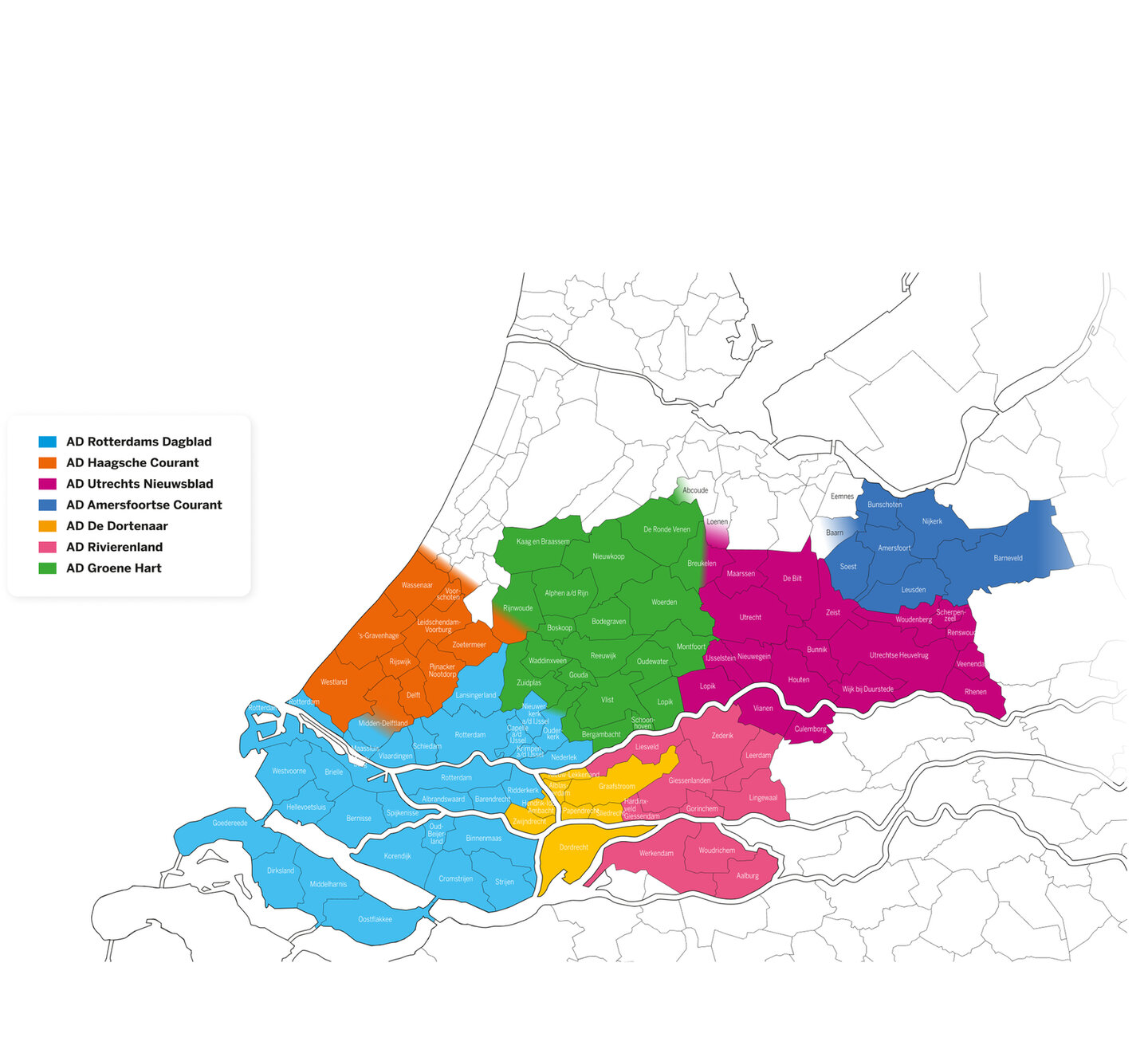
Here is where the AD Regio reporters work
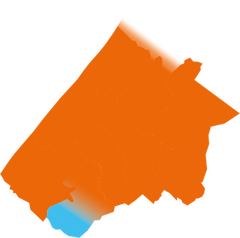
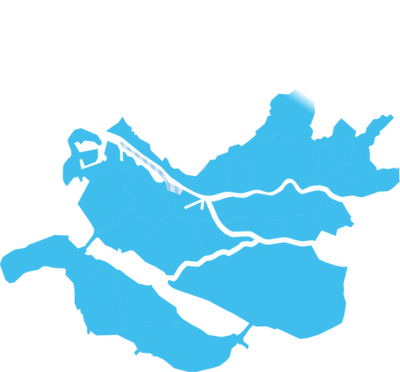
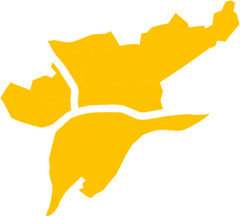
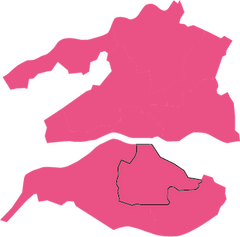
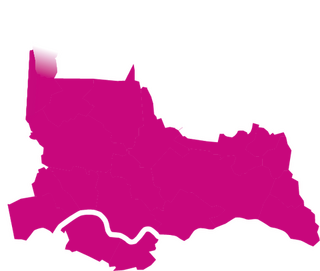
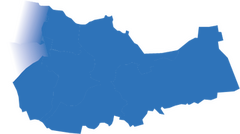
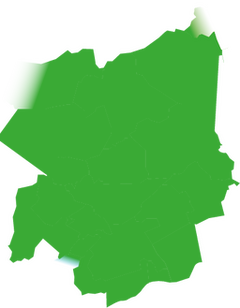


ADR Nieuwsmedia zit in de haarvaten van Nederland
Algemeen Dagblad en de zeven regionale titels van DPG Media vormen één groep: ADR Nieuwsmedia. Binnen deze grootste nieuwsorganisatie van Nederland wordt nauw samengewerkt. Hoe gebeurt dat?
We vragen het onze abonnees in Gelderland, Brabant, Twente of Zeeland elk jaar opnieuw, maar we kennen het antwoord: zij lezen onze sites, apps en kranten vooral vanwege het regionale nieuws. Dat geldt trouwens niet alleen voor lezers uit die genoemde streken. Ook de AD-lezers in en rond Den Haag, Utrecht of Rotterdam zetten ‘lokaal nieuws’ bovenaan hun lijstje van favoriete artikelen. Meteen daaronder staat vaak hun favoriete voetbalclub.
Het enorme belang dat abonnees stellen in nieuws uit hun eigen buurt deed kranten decennia geleden besluiten zich te concentreren op de beste regionale verslaggeving. Voor zaken als binnenlandse politiek, buitenland, economie, cultuur of topsport bundelden ze de krachten in gemeenschappelijke persdiensten. Zo ontstonden de Zuid-Oost Pers, de GPD en de Wegener Persdienst. Die laatste persdienst verdween toen DPG Media tien jaar geleden de regionale kranten van Wegener kocht. AD en de zeven regionale kranten werken sindsdien samen in ADR Nieuwsmedia.
Samenwerken
Een centrale redactie met 200 journalisten van het AD en de samenwerkende titels in de regio, verzorgt vanuit Rotterdam het (inter)nationale nieuws. Zodat De Gelderlander zich kan richten op de eigen provincie en de PZC zich alleen bezig hoeft te houden met Zeeland.
De stroom nieuws gaat niet alleen van Rotterdam naar de regio, maar ook omgekeerd. Als er in Eindhoven of Enschede iets groots gebeurt, delen het ED en Tubantia dit nieuws onmiddellijk met het AD en de andere regionale titels. Het maakt ADR, zeker buiten de Randstad, tot een van de snelste nieuwsorganisaties en zeker de meest wijdvertakte. Want ADR beschikt over ruim 800 journalisten en een netwerk van lokale correspondenten. ADR zit in de haarvaten van Nederland.
Leidt dit tot eenheidsworst? Allerminst. Het nieuws uit Oost-Nederland beheerst de homepage van de Stentor, dat uit de regio Breda de voorpagina van BN DeStem – en zo verder. De lay-out van ADR-kranten en -online-platforms komen overeen, de inhoud verschilt sterk, want elke titel maakt eigen, onafhankelijke keuzes. De eigenheid en uniciteit van de unieke regionale verslaggeving bepaalt immers het succes van een titel. Ruim 900.000 abonnees en bijna vijf miljoen online bezoekers zijn er dagelijks blij mee.
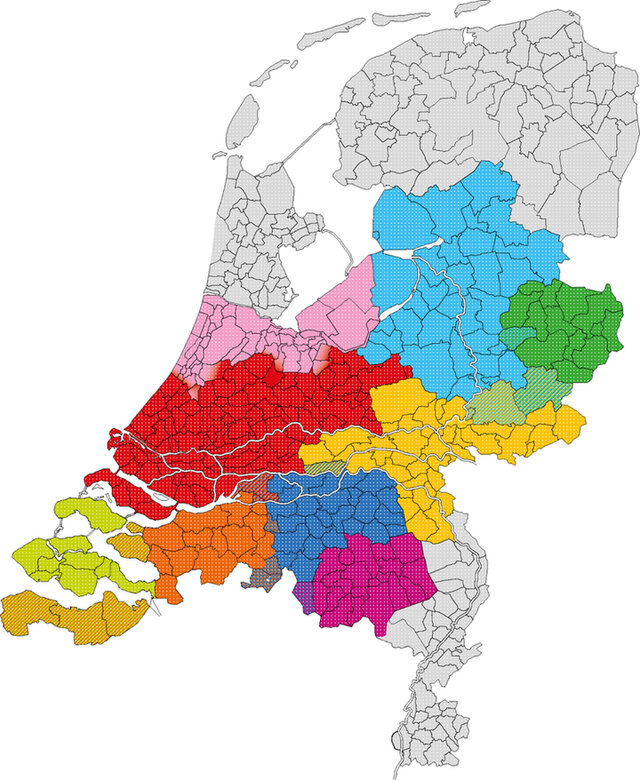
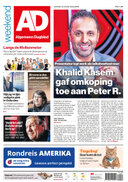
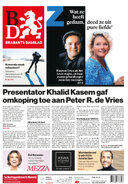
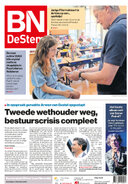
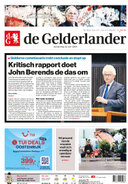
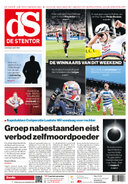
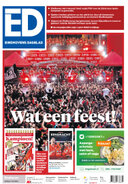
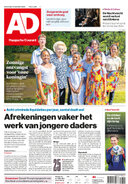
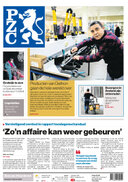
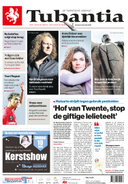
De regionale titels in Nederland
Ad Regio
de Stentor
Tubantia
De Gelderlander
Brabants Dagblad
Eindhovens Dagblad
BN DeStem
PZC
AD Landelijk
Kies jouw locatie
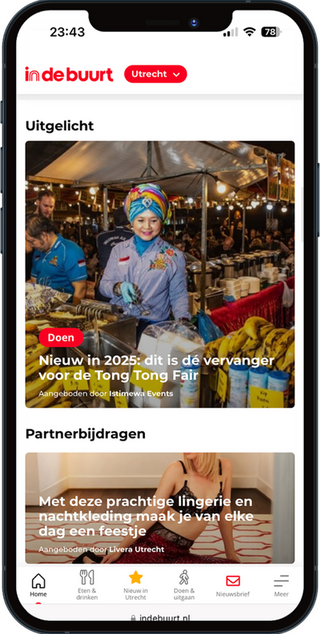
indebuurt.nl
Sinds een aantal jaren maakt ook indebuurt.nl onderdeel uit van ADR. Het gratis platform richt op alles wat een stad leuk maakt voor haar inwoners en is sterk gericht op het bieden van service. Zo geeft indebuurt.nl bezoekers informatie over nieuwe winkels, over uitgaan, activiteiten in de stad en bijzondere plekken. Inwoners worden uitgenodigd de redactie van tips te voorzien, of vrijblijvend teksten, foto’s of video’s aan te leveren. De makers van ‘indebuurt’ hebben de ambitie om gebruikers nauwer bij het stadsleven te betrekken.
indebuurt.nl is actief in 34 steden, vooral in plaatsen waar ook ADR-titels actief zijn. Artikelen van indebuurt.nl staan daarom ook op de sites en apps van de regionale titels van ADR en enkele malen per week in de gedrukte kranten. Per maand bezoeken ruim 2,5 miljoen mensen een van de secties. Daarmee staat ‘indebuurt’ in de top 10 van nieuwssites in Nederland.
Journalistiek & techniek
ADR-redacties maken gebruik van technische innovaties op het gebied van automatisering en kunstmatige intelligentie (AI). Het gebruik van spellingscorrectie is bijvoorbeeld al sinds jaar en dag ingeburgerd. Het is per definitie een journalist die bepaalt welk onderwerp wordt opgepakt en of wat er wordt gepubliceerd. AI wordt – nu nog experimenteel – gebruikt om teksten van bijvoorbeeld persberichten snel samen te vatten of tot een kort artikel te verwerken. Daarnaast kan AI ook suggesties doen voor spelling, grammatica, koppen en ideeën voor verhalen. De journalist bepaalt of suggesties worden overgenomen. We noemen deze werkwijze het mens-machine-mens-principe.
De redactie gebruikt automatisering het meest voor serviceberichten, zoals lokale weerberichten voor alle 342 gemeenten in Nederland. Als de verwachting is dat de temperatuur daalt van 2 naar -2, staat er een zin klaar die deze data-informatie vertaalt naar bijvoorbeeld ‘het gaat vriezen’ of ‘het kwik daalt onder nul’. De redactie vermeldt bij dit soort berichten dat ze automatisch zijn samengesteld. Automatisering kan ook worden gebruikt om op basis van data voor alle gemeenten in Nederland berichten te maken over bijvoorbeeld de afname van het gebruik van zonnepanelen of de toename van winkelleegstand. Het is een gespecialiseerde journalist die hiervoor data verzamelt en een basisbericht schrijft, eventueel aangevuld met andere bronnen. De techniek helpt ons om daar voor elke gemeente een eigen versie van te maken.
Cijfers
achter AD en de regionale titels
Gemiddeld dagelijks bereik
Het dagelijks bereik is een veelgebruikte indicatie van de impact die digitale journalistiek heeft. Maandbereik wordt ook weergegeven in de nationale monitors, maar daarin spelen eenmalige bezoekers van de sites een relatief grote rol.
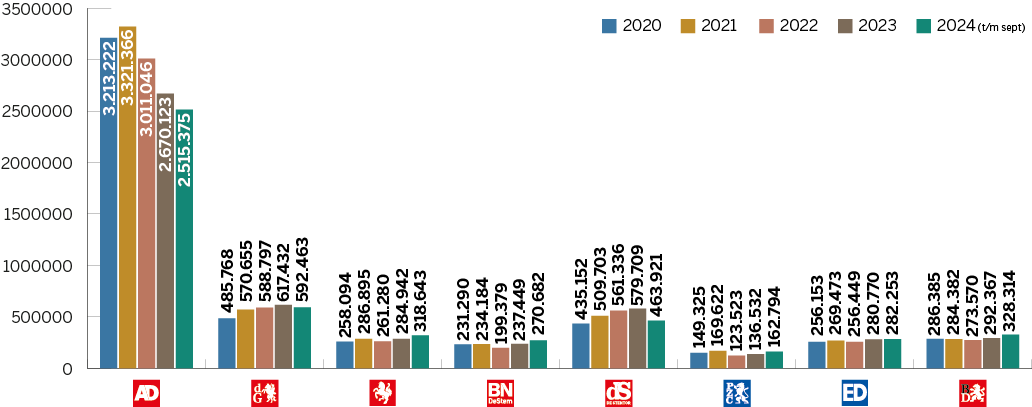
Journalisten in vaste dienst in 2024
Dit geeft de omvang van de redactie weer, omgerekend in voltijds banen (fte). Het zijn zowel de verslaggevers als de chefs, eindredacteuren, vormgevers, beeldredacteuren, video- en podcastmakers en onlineredacteuren. Om het beeld zuiver te houden zijn de freelance journalisten niet opgenomen. Die leveren eveneens een belangrijke bijdrage in de vorm van artikelen, columns, beeld, audio en video. Het zijn er soms honderden per titel. Aantal en werkzaamheden fluctueren van jaar tot jaar.

Meer info
Gemiddeld aantal unieke artikelen per dag
Dit is de hoeveelheid eigen artikelen die elke redactie produceert, van groot tot klein. De meeste redacties publiceren meer dan dat: bijvoorbeeld artikelen van de centrale redactie in het geval van de regionale kranten, of (in België) artikelen van collega-titels die worden doorgeplaatst. Die zijn niet meegeteld, net zo min als de kleine lokale berichten die automatisch worden gemaakt (zoals het weer en 112-berichten), of de doorgeplaatste artikelen van ‘Indebuurt’. Zo ontstaat het zuivere cijfer van wat de eigen redactie dagelijks maakt.

Meer info
Betalende abonnees
Dit is de som van papieren, digitale en hybride abonnementen. Het is het gemiddelde aantal over het desbetreffende jaar.

Rapportcijfers van eigen abonnees
Dit cijfer wordt gegeven door deelnemers aan een jaarlijks lezersonderzoek dat voor de meeste titels wordt gehouden.

Vertrouwenscijfer uit onderzoek
Dit cijfer is afkomstig uit recent onderzoek naar merkvertrouwen in opdracht van DPG Media. Daarbij geeft een algemeen publiek, dus niet alleen abonnees of bezoekers, vertrouwen in verschillende nieuwsmedia aan op een schaal van 0 (helemaal niet betrouwbaar) tot 10 (uiterst betrouwbaar). Daarnaast worden abonnees uitgesplitst, die hun titel doorgaans meer dan gemiddeld vertrouwen. Deze onderzoeksmethode en de uitkomsten komen overeen met die van het jaarlijkse Digital News Report van het Reuters Institute in Oxford. De Nederlandse en Vlaamse gemiddelde vertrouwenscijfers liggen in die monitor hoger dan die van nieuwsmedia in de omringende Europese landen.
Algemeen publiek
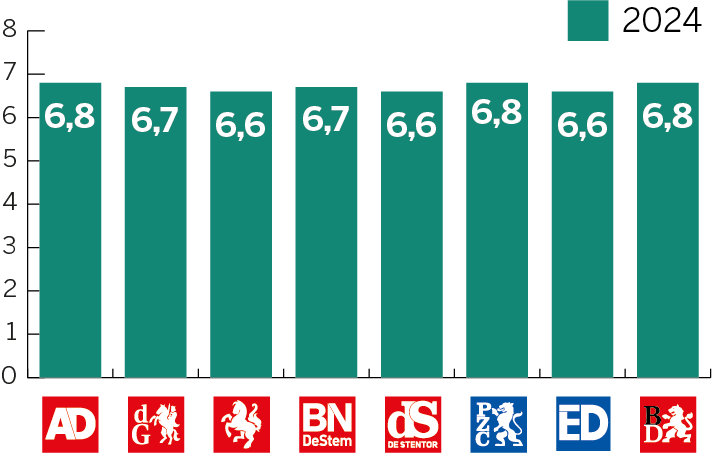
Abonnees
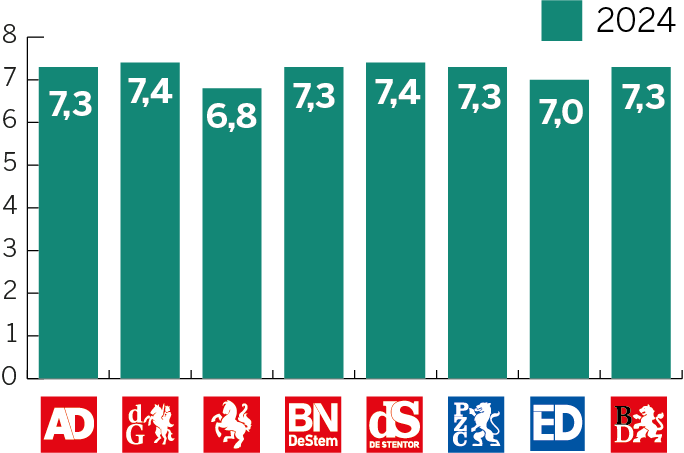
Aantal podcastafleveringen per jaar van alle titels
Deze cijfers geven aan hoeveel podcasts er door de verschillende titels zijn ontwikkeld.
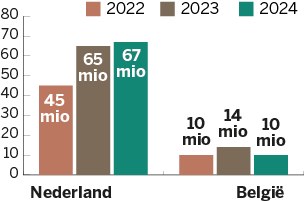
Gemiddeld aantal unieke video's per dag
Deze cijfers geven aan hoeveel video's er door de verschillende titels zijn ontwikkeld.
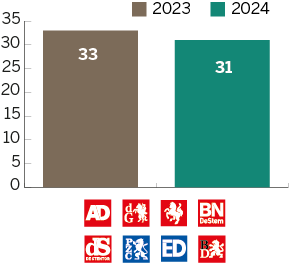
Dagelijks bereik
Gemiddeld dagelijks bereik
Het dagelijks bereik is een veelgebruikte indicatie van de impact die digitale journalistiek heeft. Maandbereik wordt ook weergegeven in de nationale monitors, maar daarin spelen eenmalige bezoekers van de sites een relatief grote rol.

Betalende abonnees
Betalende abonnees
Dit is de som van papieren, digitale en hybride abonnementen. Het is het gemiddelde aantal over het desbetreffende jaar.

Rapportcijfer van abonnees
Rapportcijfers van eigen abonnees
Dit cijfer wordt gegeven door deelnemers aan een jaarlijks lezersonderzoek dat voor de meeste titels wordt gehouden.

Journalisten in vaste dienst
Journalisten in vaste dienst in 2024
Dit geeft de omvang van de redactie weer, omgerekend in voltijds banen (fte). Het zijn zowel de verslaggevers als de chefs, eindredacteuren, vormgevers, beeldredacteuren, video- en podcastmakers en onlineredacteuren. Om het beeld zuiver te houden zijn de freelance journalisten niet opgenomen. Die leveren eveneens een belangrijke bijdrage in de vorm van artikelen, columns, beeld, audio en video. Het zijn er soms honderden per titel. Aantal en werkzaamheden fluctueren van jaar tot jaar.

Meer info
Unieke artikelen per dag
Gemiddeld aantal unieke artikelen per dag
Dit is de hoeveelheid eigen artikelen die elke redactie produceert, van groot tot klein. De meeste redacties publiceren meer dan dat: bijvoorbeeld artikelen van de centrale redactie in het geval van de regionale kranten, of (in België) artikelen van collega-titels die worden doorgeplaatst. Die zijn niet meegeteld, net zo min als de kleine lokale berichten die automatisch worden gemaakt (zoals het weer en 112-berichten), of de doorgeplaatste artikelen van ‘Indebuurt’. Zo ontstaat het zuivere cijfer van wat de eigen redactie dagelijks maakt.

Meer info
Vertrouwenscijfer uit onderzoek
Vertrouwenscijfer uit onderzoek
Dit cijfer is afkomstig uit recent onderzoek naar merkvertrouwen in opdracht van DPG Media. Daarbij geeft een algemeen publiek, dus niet alleen abonnees of bezoekers, vertrouwen in verschillende nieuwsmedia aan op een schaal van 0 (helemaal niet betrouwbaar) tot 10 (uiterst betrouwbaar). Daarnaast worden abonnees uitgesplitst, die hun titel doorgaans meer dan gemiddeld vertrouwen. Deze onderzoeksmethode en de uitkomsten komen overeen met die van het jaarlijkse Digital News Report van het Reuters Institute in Oxford. De Nederlandse en Vlaamse gemiddelde vertrouwenscijfers liggen in die monitor hoger dan die van nieuwsmedia in de omringende Europese landen.
Algemeen publiek
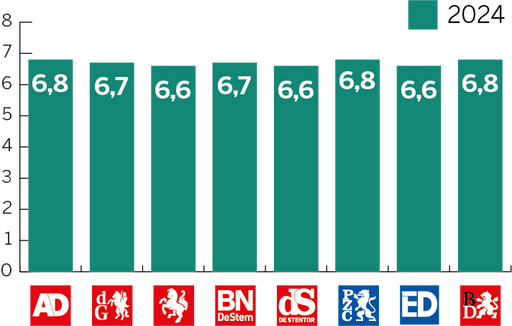
Abonnees
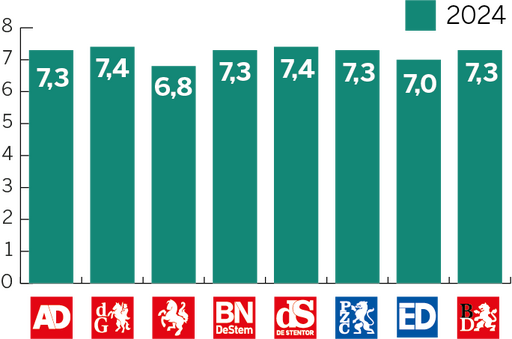
Aantal podcastafleveringen
Aantal podcastafleveringen per jaar van alle titels
Deze cijfers geven aan hoeveel podcasts er door de verschillende titels zijn ontwikkeld.

Aantal unieke video's
Gemiddeld aantal unieke video's per dag
Deze cijfers geven aan hoeveel video's er door de verschillende titels zijn ontwikkeld.

